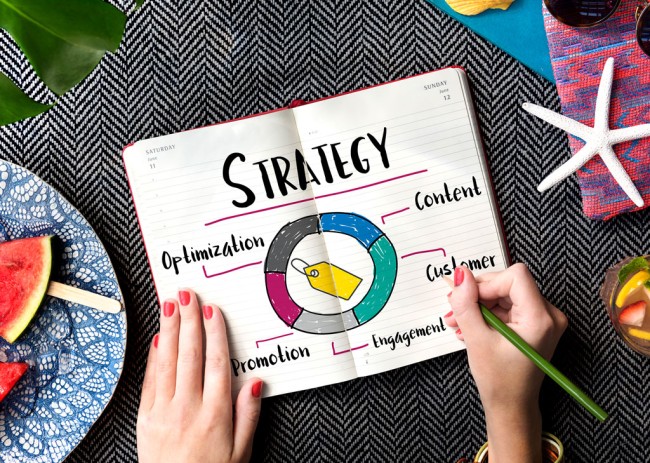As the midyear point approaches, teachers often find themselves at a crossroads—balancing the need for rest and relaxation during the break with the desire to enhance their teaching practices for the upcoming semester. Effective end-of-midyear preparation can empower teachers to optimize their instructional methods, improve student outcomes, and still enjoy a well-deserved vacation. In this comprehensive guide, we will explore strategies and best practices to help teachers make the most of their midyear break, ensuring that both professional growth and relaxation are prioritized.

The Significance of End-of-Midyear Preparation
End-of-midyear preparation holds great importance for teachers as it sets the stage for the second half of the academic year. Here are some reasons why it matters:
Reflective Practice: It offers teachers an opportunity to reflect on the successes and challenges of the first semester, identifying areas for improvement.
Student Outcomes: Effective preparation can lead to improved student outcomes in the second semester, as teachers implement new strategies and adjust their teaching methods.
Consistency: It helps maintain consistency in teaching practices, ensuring that students experience a coherent and effective learning environment throughout the year.
Personal Growth: End-of-midyear preparation allows teachers to invest in their own professional development, fostering continuous growth and learning.
Work-Life Balance: It aids in striking a balance between work and personal life by strategically managing work-related tasks without compromising vacation time.
Let’s now delve into strategies to maximize the benefits of end-of-midyear preparation without causing any disruption to planned vacations.

Reflection and Self-Assessment
Before diving into planning, take time to reflect on the past semester. Consider what worked well, what challenges you faced, and areas where you’d like to improve. Engage in self-assessment to identify specific goals for the upcoming semester. This reflection process can be done during the last weeks of the current semester, so it doesn’t interfere with your vacation.
Goal Setting
Based on your reflections, set clear, achievable goals for the next semester. These goals should be specific, measurable, and aligned with improving your teaching and student outcomes. Examples of goals might include implementing new teaching strategies, increasing student engagement, or improving assessment methods.
Curriculum Review and Adjustment
Review your curriculum for the upcoming semester. Identify any gaps or areas that may need adjustment. This review can help ensure a smoother transition into the next semester and reduce last-minute preparation during the vacation period.
Resource Gathering
Compile necessary teaching resources, materials, and lesson plans well in advance. This might include textbooks, digital resources, worksheets, and supplementary materials. Having everything organized and accessible will make the planning process more efficient.
Lesson Planning and Scheduling
Start planning lessons and creating a tentative schedule for the upcoming semester. Outline the topics, objectives, and activities for each class period. Having a rough plan in place can alleviate stress when returning from vacation, as you’ll have a clear roadmap to follow.
Professional Development
Consider how you can invest in your own professional development during the midyear break. This might involve reading educational literature, taking online courses, attending webinars, or participating in workshops. Such activities can be scheduled to accommodate your vacation plans.

Collaborative Planning
Collaborate with colleagues to share ideas, resources, and teaching strategies. Discuss your goals and seek their input. Collaborative planning can enhance your teaching approach and reduce the workload.
Automated Communication
Set up automated communication tools to inform students and parents about the upcoming semester. You can schedule emails, announcements, and reminders in advance to keep everyone informed without being tethered to your work during vacation.
Digital Platforms and Resources
Leverage digital platforms and resources for teaching and communication. Tools like learning management systems (LMS), virtual classrooms, and email can help you stay connected with students and parents, even when you’re away.
Delegation and Prioritization
Learn to delegate tasks when possible. If you have administrative responsibilities, consider assigning them to a colleague or an assistant during your vacation. Prioritize tasks to ensure you focus on the most critical aspects of preparation.
Time Blocking
Allocate specific time blocks for work-related tasks during your vacation. For example, you might dedicate a few hours in the morning to planning and professional development, leaving the rest of the day for leisure activities.
Work-Life Balance Commitment
Commit to maintaining a healthy work-life balance during your vacation. Set boundaries and stick to them. Communicate your vacation schedule with colleagues, students, and parents to manage expectations.
Self-Care
Prioritize self-care during your vacation. Engage in activities that rejuvenate you mentally and physically. Whether it’s reading a book, spending time with loved ones, or pursuing a hobby, taking care of yourself is essential for your overall well-being.
Reflect and Adjust as Needed
After your vacation, take time to reflect on the effectiveness of your end-of-midyear preparation. What worked well, and what could be improved? Use this feedback to adjust your approach for future midyear preparations.

